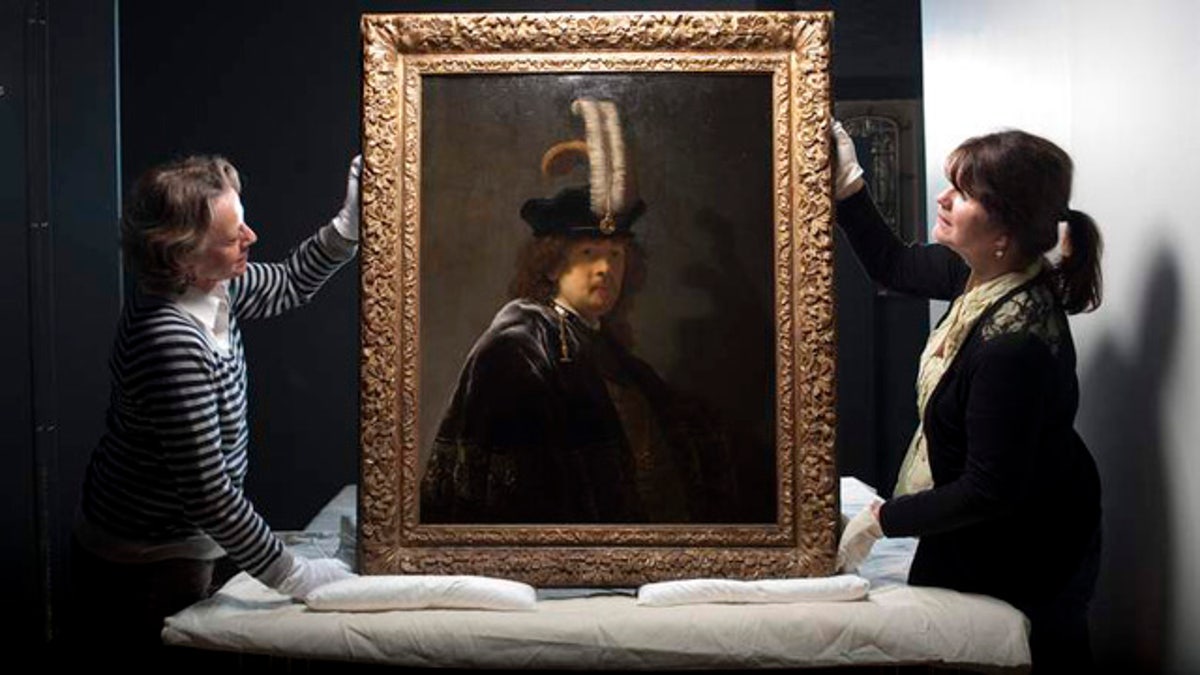
June 9, 2014: Conservators hold up a recently verified 1635 self-portrait by Dutch artist Rembrandt van Rijn (Courtesy Press Association)
Scientists in Britain have confirmed a 1635 painting of Dutch artist Rembrandt to be an authentic self-portrait, putting to rest a mystery that has endured for over 45 years.
The authorship of the painting had been in doubt since 1968, when Rembrandt specialist Horst Gerson determined that several aspects of the work did not match what was known about Rembrandt's painting style at that time.
From that point, the majority thinking among art historians and specialists was that the portrait was the work of one of Rembrandt's pupils. But last year, officials at Britain's National Trust, where the painting had been donated, sent it off to be tested after another specialist, Dr. Ernst van de Wetering, said he believed the work was a genuine Rembrandt.
As part of their examination, technicians removed several layers of varnish and analyzed the artist's signature.
"The signature and date of 1635, inscribed both on the front and back of the panel, had been considered problematic in previous assessments as it was thought that the style and composition was much more akin to [Rembrandt's] style slightly later in his career," Christine Slottvedd Kimbriel of the Hamilton Kerr Institute told reporters. "But the cross-section analysis left no reason to doubt that the inscription was added at the time of execution of the painting."
The varnish stripping also enabled the researchers to see the painting's true colors.
"The varnish was so yellow that it was difficult to see how beautifully the portrait had been painted," David Taylor, painting and sculpture curator at The National Trust, said. "Now you can really see all the flesh tones and other colours, as well as the way in which the paint has been handled - it's now much easier to appreciate it as a Rembrandt."
Finally, an X-ray photography and infrared refrectography showed compositional changes in keeping with Rembrandt's own work habits.
"Changes to the outline of the figure, carried out at a late stage and without much care to perfectly match the surrounding paint, were also present," Christine Slottvedd Kimbriel of the Hamilton Kerr Institute said. "Such alterations are present in many of Rembrandt’s own works, suggesting a dynamic process of painting typical of Rembrandt."
The painting is worth an estimated $50 million, but cannot be sold as the National Trust's mandate is to care for items for the British public's benefit in perpetuity.
